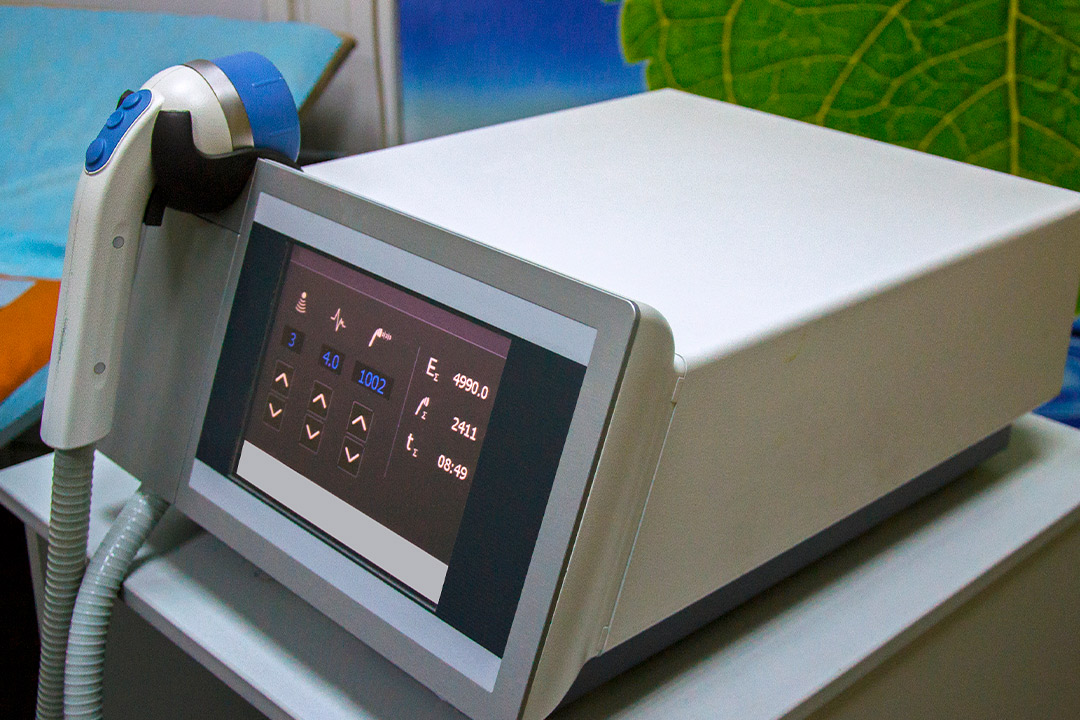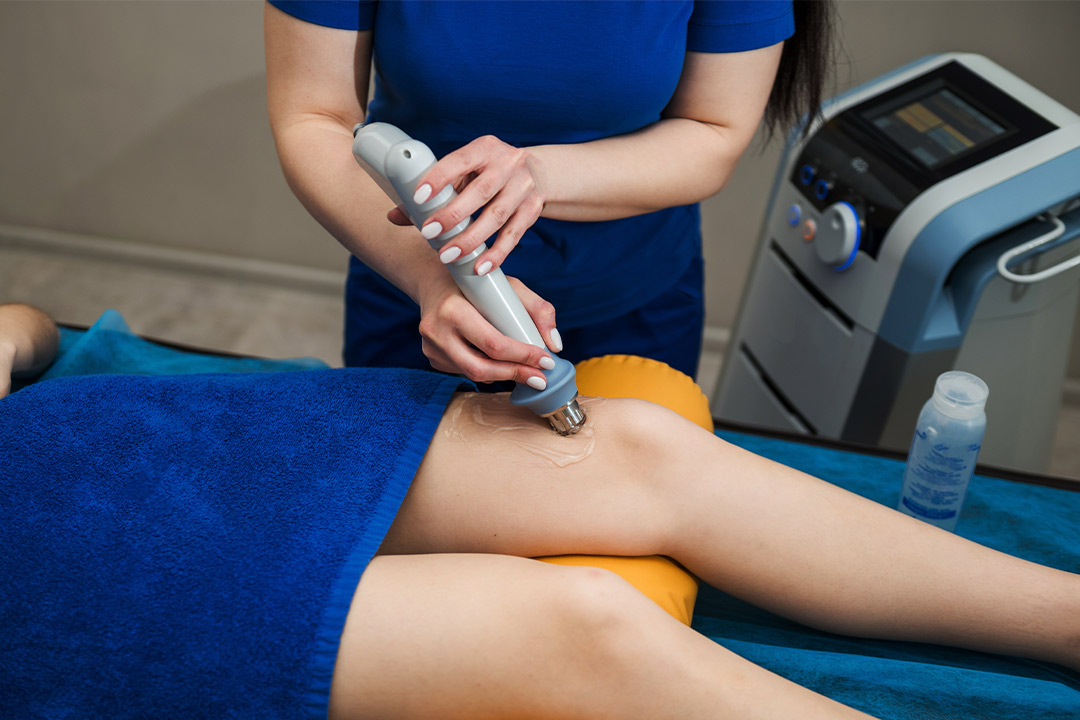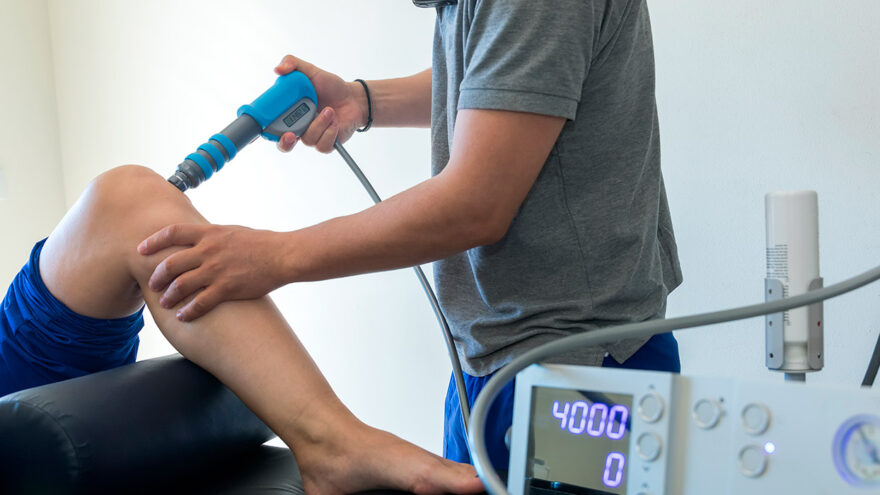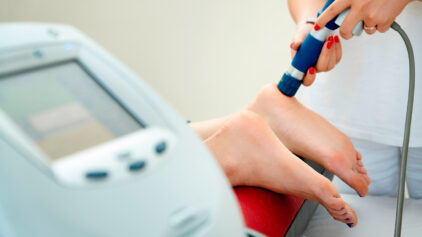As winter approaches, medical practices and rehabilitation centers often brace for a predictable seasonal challenge: a sharp rise in patients seeking therapeutic care. Just as fall sports season brings its own injury spike, colder months introduce conditions that strain healthcare resources and increase demand for treatment services.
Winter weather plays a major role in this shift. Icy sidewalks and slippery roads lead to a significant rise in slip-and-fall injuries, contributing to fractures, sprains, and soft-tissue trauma. Winter sports, like skiing, ice skating, and snowboarding, add to the influx. Chronic conditions, particularly arthritis, tend to worsen in cold temperatures, bringing more patients through your doors for pain management and mobility therapy.
Respiratory illnesses also rise in winter, making pulmonary rehabilitation equipment increasingly essential. Many of these conditions benefit from advanced therapeutic technologies such as shockwave therapy, which supports faster recovery and pain reduction.
Seasonal Strain on Healthcare Operations

With this patient increase comes operational stress. Facilities often face:
- Overloaded schedules and long wait times
- Higher demand for specialized therapy equipment that may be underutilized in other seasons
- Increased pressure on staff, risking burnout and reduced treatment quality
- Limited budgets to expand equipment inventory for temporary needs
- Greater urgency to streamline processes and maintain patient satisfaction during a peak-revenue period
Organizations that successfully plan for seasonal clinical efficiency are better positioned to maintain patient trust, avoid service bottlenecks, and sustain strong financial performance. The key question becomes how to meet winter’s increased therapy demand without overextending capital or committing to equipment that will sit idle once the season ends.
Benefits of Leasing Therapy Equipment for Winter Patients
Leasing therapy equipment offers a smart way to manage demand surges without the cost and commitment of purchasing machines outright. For clinics preparing for winter, leasing can provide several advantages:
- Fast Access to Advanced Technology
Leasing allows facilities to bring in modern treatment devices, including shockwave therapy systems, with minimal delay. This ensures your team has the right tools in place when winter patient numbers peak, supporting faster recovery timelines and greater treatment capacity.
- Flexibility to Adjust Inventory
Patient volume fluctuates sharply during the winter months. Leasing allows optimization strategies to scale equipment up during peak weeks and return or reduce units when volume stabilizes. This prevents unnecessary expenses during slower seasons and ensures resources match real-time need.
- Lower Upfront Financial Burden
Owning therapy equipment typically requires a large capital investment. Leasing spreads costs into predictable monthly payments, preserving liquidity and freeing up financial resources for staffing, operations, or facility upgrades. For high-demand periods, this flexible structure can support increases in patient throughput by up to 66%.
- Access to Seasonal-Specific Devices
Some equipment is most useful during winter injury cycles. Devices such as acoustic compression therapy systems can shorten recovery periods by up to 50%, helping clinicians move patients through care plans efficiently during peak volume.
Important Leasing Terms and Service

Before signing a lease, review essential terms to ensure they align with your seasonal needs:
- Lease Length and Renewal Options
Most therapy equipment leases run 12–36 months. Short-term options may support seasonal needs but typically come with higher monthly costs. Consider renewal at the end of a lease under a new lease agreement. Review renewal terms closely to avoid unexpected rate changes.
- Cancellation and Early Termination Clauses
Check penalty structures for ending a lease early. Flexibility is important when managing unpredictable patient volumes, or upgrading equipment as newer models become available.
- Service Support and Response Times
Fast technical support matters during peak seasons. Confirm guaranteed response times and service availability so equipment issues don’t interrupt patient care.
- Repair and Replacement Policies
Verify that your agreement specifies how quickly repairs or replacements will be provided. Ask about loaner equipment availability during repairs.
- Maintenance Responsibilities
Understand which maintenance tasks your staff must handle versus what the leasing provider covers. Clear cleaning, calibration, and troubleshooting protocols help minimize downtime.
Financial Considerations Before Leasing
Before committing to a lease, take a moment to assess how it fits your practice’s budget, growth goals, and seasonal demand needs.
- Lease vs. Purchase Cost ComparisonPurchasing shockwave therapy systems typically ranges from $15,000 to $40,000. Leasing avoids that upfront cost, with monthly payments from about $488 to $1,340 depending on the model. Compare expected winter revenue increases against these lease payments to evaluate ROI.
- Cash Flow & Budget FlexibilityLeasing preserves working capital and ensures predictable monthly expenses, helpful during seasonal volume shifts. The fixed monthly payments facilitate accurate budgeting and potentially improve your credit rating through better balance sheets, especially valuable during unpredictable winter patient volumes.
- Tax BenefitsLease payments are often deductible as business expenses, which may offer a more immediate financial benefit than depreciation on purchased equipment. Consult with a tax professional about specifics for your practice.
- Long-Term Demand & Lease-to-Own OptionsIf winter surges are part of a long-term trend, a lease-to-own structure may provide both flexibility and future savings. Clinics can also upgrade devices as newer technologies are released.
How the Shockwave Source Leasing Process Works

For clinics preparing to scale quickly during winter, Shockwave Source offers a streamlined leasing program designed to get devices into your practice without delays. The process begins with a consultation to assess your treatment volume, budget, and equipment needs, ensuring the device selected matches your patient demand. Practices can apply through a simplified online form and receive fast approval so they can begin treating patients right away.
Lease agreements include:
- Access to advanced shockwave systems
- Training for clinical staff
- Ongoing support throughout the lease term
Practices can also choose flexible financing structures, including low monthly payments and lease-to-own options for long-term use. This approach ensures clinics receive modern technology, predictable costs, and responsive service, all significant advantages during high-demand winter months..
Strengthen Winter Care Capacity with Shockwave Therapy
Winter injury patterns bring urgency to expand treatment capacity, improve efficiency, and maintain patient satisfaction. Leasing shockwave therapy equipment supports these goals by providing advanced tools without major upfront spending or long-term commitment.
Shockwave Therapy from Shockwave Source helps clinics treat pain and support rehabilitation quickly, typically in 5–10 minutes per session. Leasing options are structured to be affordable and flexible, with access to the latest device models and customizable treatment settings.
To explore equipment options and leasing solutions tailored to winter needs, visit the
Shockwave Source Leasing Page and learn how Shockwave Therapy can enhance patient care and practice growth during the busiest season.







